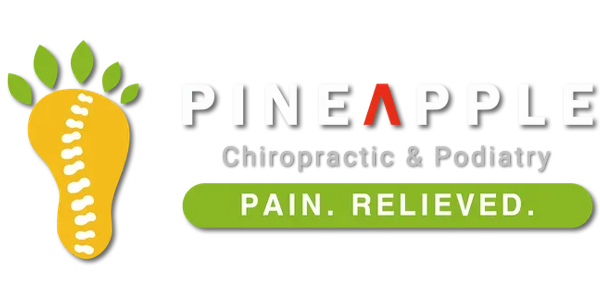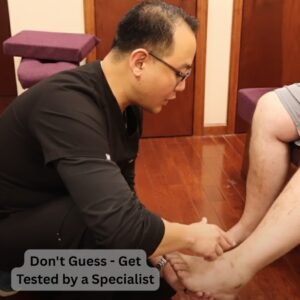Chiropractor and physical therapist are two common terms for those who are struggling with pain issues like back pain, neck pain, sciatica, knots and ankle pain. Some people think chiropractors and physical therapists are the same but there are some key differences between them.
Choosing one of them depends on the causes and nature of your problem. Chiropractors treat in an invasive way where treatment from a physical therapist including prescribed exercises may work slowly but can help your daily activities more smoothly.
Now we are exploring the right option for you: chiropractor or physical therapist.
What Does a Chiropractor Do? Physical Examination
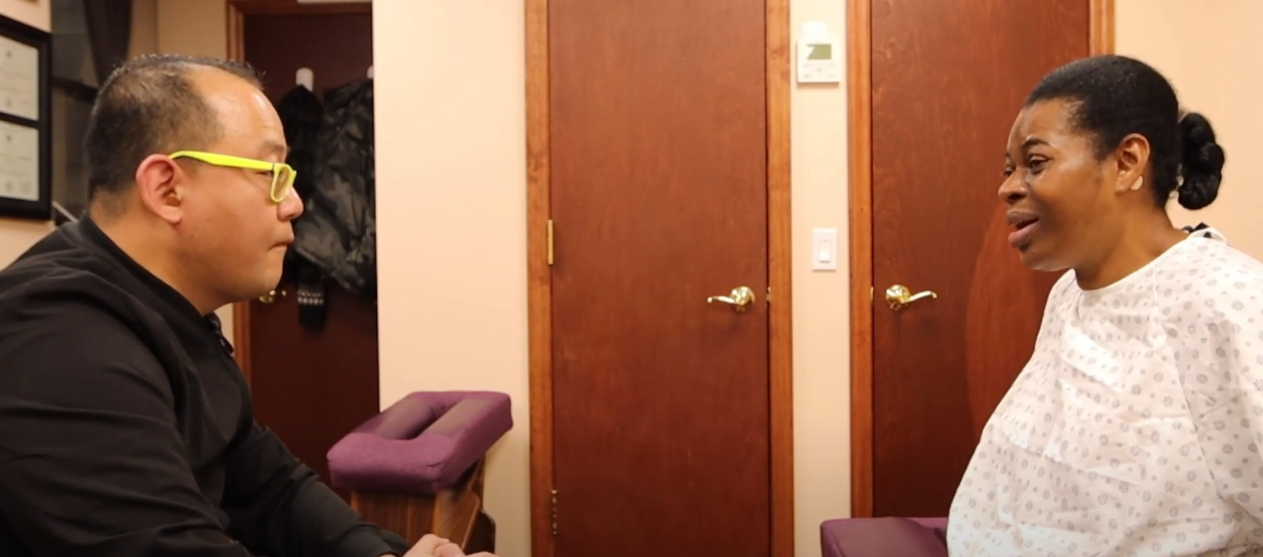
I am Dr. Lee, a chiropractic specialist who helps with nerve and muscle problems.Without the use of medications they can relieve you of back pain, neck pain, sciatica and other spinal problems. Here are the following steps of a chiropractor.
Physical Examination
First of all, a chiropractor takes a physical exam of posture, arm and leg mobility, muscle strength and other unordinary things they find.
Realigning the spine
They ensure the perfect spinal adjustmentsIf the spine or shoulder is out of place, they will adjust it. Sometimes, the misalignments are in the shoulder and hip.
Massaging
They apply massage therapy by hand or technical support to make your body function more smoothly, normal blood circulation and easy breathing. Read our massage therapy blog to know more about how to fix your body aches with massage therapy.
Exercise Recommendations
Exercise like swimming and cycling are essential to ease the joints. A chiropractor usually suggests this kind of exercise.
Taking tissue therapy
This therapy not only softens the tissue but also tightens the muscle. It also makes the muscle stronger.
Taking hot and cold therapy
They use a hot water bag and ice to reduce pain and discomfort. Each therapy is used for a different purpose.
Imaging scan
X-ray or MRI is also used if needed. Usually accidental injury needs an imaging scan.
What Does a Physical Therapist Do?
Physical therapists work on restoring mobility and strength, typically through exercise and movement therapy. Here’s a look at their process
Diagnosing
Physical therapists take an exam of patients to determine the function and flexibility. For this, they observe patient’s standing, walking and performing tasks. They can ask the patient’s medical history.
Creating a care plan
After the examination, physical therapists create a care plan for the patient aiming for the goal, expected result and avoiding the risks.
Exercises
The first step of the treatment process is exercise. Physical therapists may make you practice the planned exercise based on your pain.
Stretching
Stretching is the key treatment of physical therapists. They suggest low pressure stretching that can impact on your pain.
Free hand massage
Your PT may use free hand massage to restore flexibility and increase blood circulation.
Instrument based techniques
Sometimes, PTs prepare some special instruments to apply their therapy that may help increase your body function faster.
Monitoring progress
Physical therapists always monitor the changing of a patient’s condition. Based on the report, they again make a plan for treatment.
Chiropractor vs Physical Therapist: Key Differences
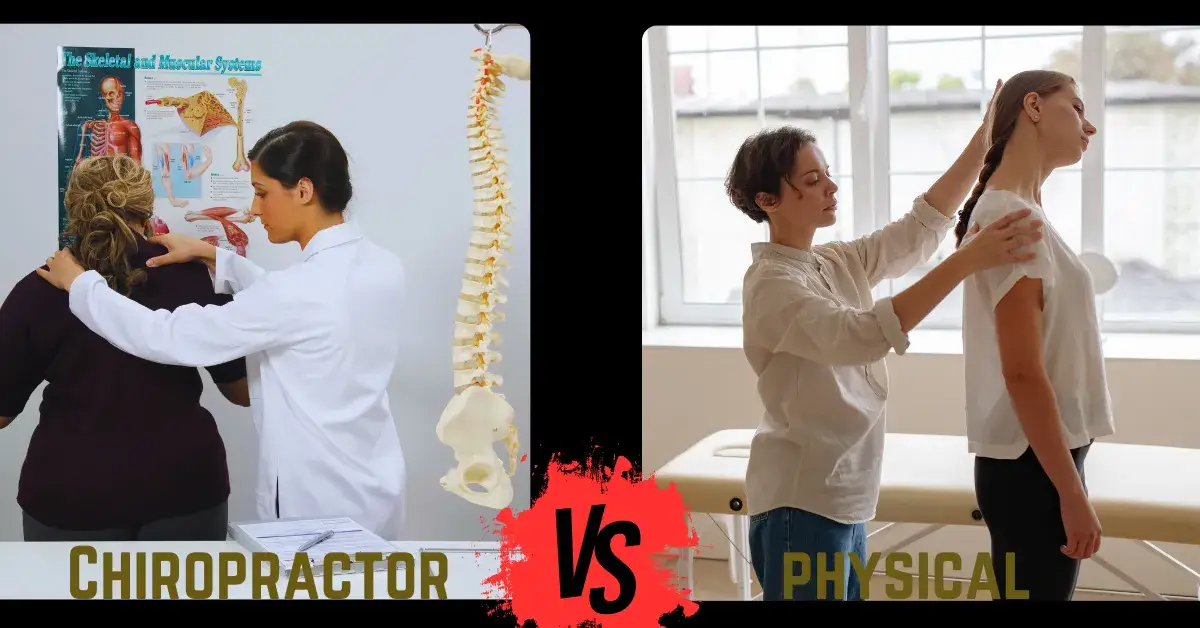
Though chiropractor and physical therapist work with the same goal, there are some differences between them in the process of treatment. To understand more easily, see this table.
| Aspect | Chiropractors | Physical Therapists |
|---|---|---|
| Education | Doctorate in Chiropractic (DC) | Doctorate in Physical Therapy (DPT) |
| Treatment Focus | Spinal adjustments, alignment, nerve function | Rehabilitation, strength training, movement therapy |
| Common Tools | Manual adjustments, activators, spinal decompression | Exercise equipment, ultrasound, electrical stimulation |
| Primary Goals | Improve nervous system function, relieve pain | Restore mobility, enhance function, prevent injury |
| Common Use Cases | Back pain, pinched nerves, headaches | Post-surgery recovery, muscle injuries, arthritis |
| Licensing | Licensed Chiropractor | Licensed Physical Therapist |
Chiropractor or physical therapist for back pain
- To visit a chiropractor or get a massage for back pain depends on the cause and nature of your pain and discomfort. If your back pain comes from spinal disorders or nerval realignment, a chiropractor may help you.
- Again, if your back pain comes from lower strength, a physical therapist will be the better option.
Chiropractor or physical therapist for Shoulder Pain
Physical therapist should be chosen when you are struggling with
- Lower strength
- Mild stress
- Muscle weakness
- Post-surgical recovery
which are the root cause of shoulder pain.
If your pain includes nerve symptoms like
- Tingling
- Numbness
- Misalignment in the cervical spine
then, choosing a chiropractor is a better option.
Chiropractor or physical therapist for sciatica
- When sciatica is caused by spinal misalignment, chiropractors focus on spinal adjustments and realignment to reduce pain from sciatic nerve.
- Besides, if sciatica is caused by tight muscles and tissue problems, physical therapists use their special techniques to relax the muscles and reduce pain from sciatic nerve.
Chiropractor or physical therapist for pinched nerve
- Pinched nerve is a nerve compression, spinal misalignment and joint dysfunction. Chiropractors can help realign the spine, adjust the nerve to relieve pain.
- Physical therapists can help ease muscle tightness and reduce pain from the pinching nerve.
When should you see a chiropractor?
If you have faced disorders like
- Back pain
- Neck pain
- Hip pain
- Accidental injury
- Joint problem
- Thick muscle
then you should meet a chiropractor.
Why you should make an appointment with a chiropractor
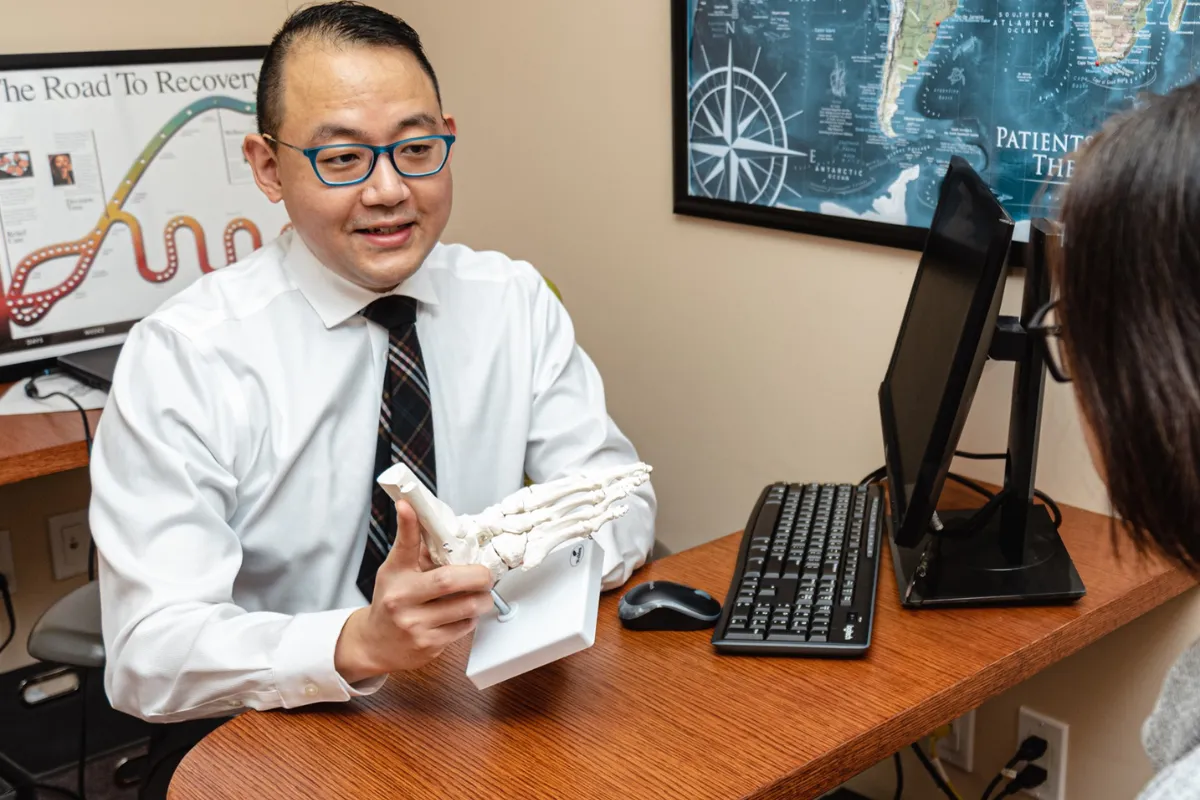
Methods
A national phone survey of households was done to measure attitudes, utilization, and health practices of chiropractic users and nonusers. A 73% response rate was achieved. Satisfaction with chiropractic services is analyzed using both descriptive and multivariate methods.
Results
Satisfaction levels with chiropractic care are quite high (83% of persons are satisfied or very satisfied). High satisfaction is related to several factors, including whether the chiropractor orders and interprets laboratory tests, whether the chiropractor displays concern about the patient’s overall health, and the extent to which the chiropractor explains the condition and the treatment.
After knowing and understanding everything, I hope you are now 100% ready to take the final decision. Without further delay, you should book an appointment with us now. You can click to see our previous case studies.
When to see a physical therapist?
If you are struggling with
- Lower strength
- Lack of flexibility
- Muscle weakness
- Injury
- Strain
then you should meet a physical therapist.
Reasons to appointment with a physical therapist
When you want to take professional support for your daily activities like walking, jogging, running, workout or gym, you should appoint a physical therapist.
Frequently Asked Questions
What is the difference between a chiropractor and a physical therapist?
The key difference is in their treatment approach. Chiropractors use spinal adjustments to relieve pain and improve nerve function. Physical therapists focus on exercises, stretches, and movement therapy to restore strength and mobility.
When should you see a chiropractor for back pain?
Visit a chiropractor for back pain caused by spinal issues or nerve problems. They use adjustments to realign the spine and reduce discomfort effectively.
What treatments do physical therapists typically use for sciatica?
Physical therapists help sciatica with targeted exercises to ease tight muscles. They also use manual therapy and tools to improve flexibility and relieve nerve compression.
What are the benefits of seeing a chiropractor for neck pain?
Chiropractors address neck pain by realigning the spine and reducing nerve tension. They also use massages to improve circulation and provide lasting relief.
Make an appointment now to solve your problem.
Call Pineapple Chiropractic and Podiatry
Visit drleefoot.com to schedule your appointment
